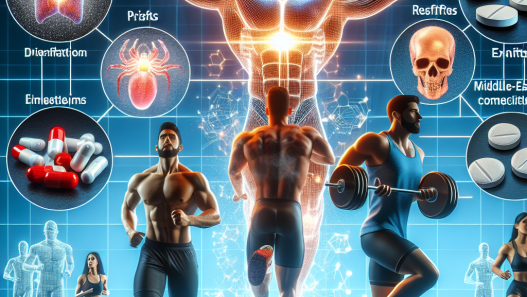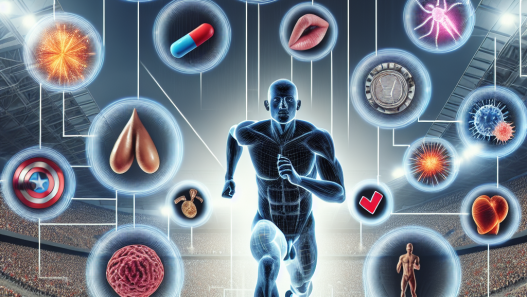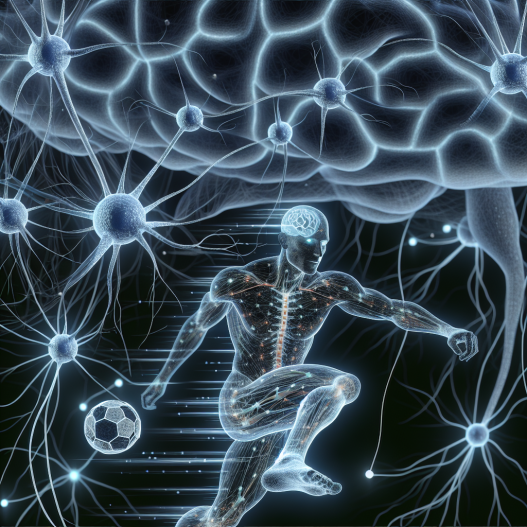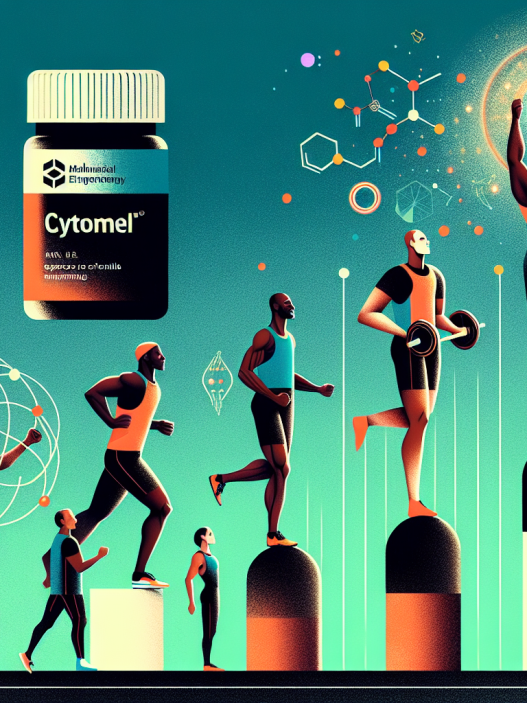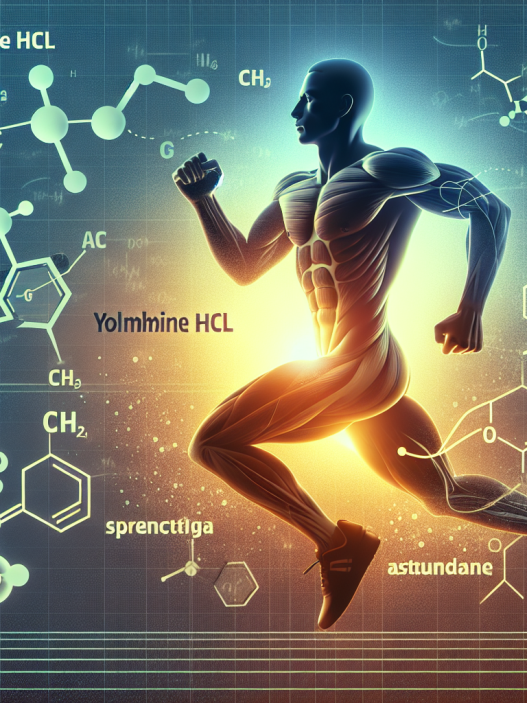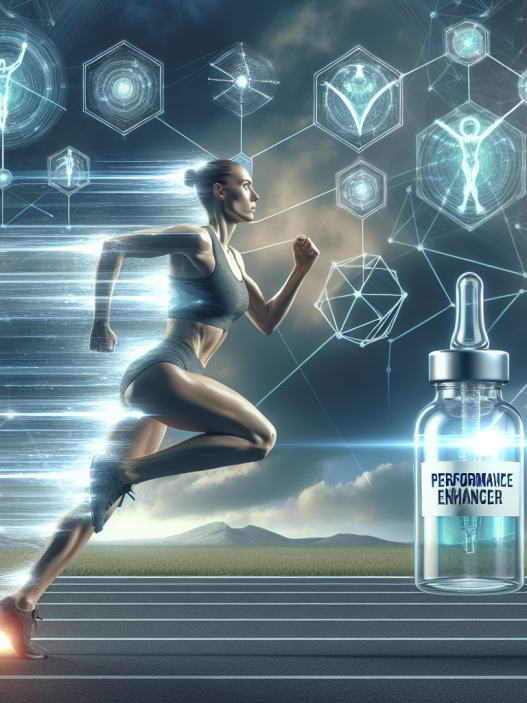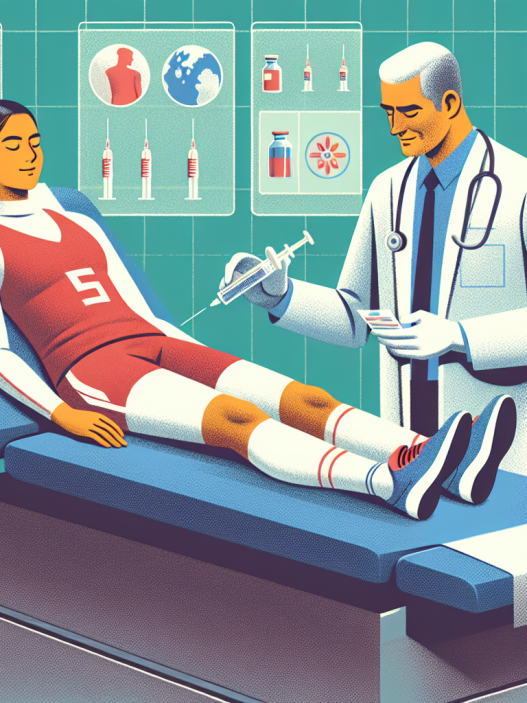-
Table of Contents
- Exploring Cytomel’s Impact on the Nervous System in Sports
- The Role of the Nervous System in Sports Performance
- The Impact of Cytomel on the Nervous System
- Effects on the Central Nervous System
- Effects on the Peripheral Nervous System
- Real-World Examples
- Pharmacokinetics and Pharmacodynamics of Cytomel
- Expert Opinion
- Conclusion
- References
Exploring Cytomel’s Impact on the Nervous System in Sports
In the world of sports, athletes are constantly seeking ways to improve their performance and gain a competitive edge. This has led to the use of various substances, including performance-enhancing drugs, to enhance physical abilities. One such substance that has gained popularity in recent years is Cytomel, also known as liothyronine, a synthetic form of the thyroid hormone triiodothyronine (T3). While Cytomel has been primarily used to treat hypothyroidism, its use in sports has raised questions about its impact on the nervous system. In this article, we will explore the effects of Cytomel on the nervous system in sports and its potential benefits and risks.
The Role of the Nervous System in Sports Performance
The nervous system plays a crucial role in sports performance, as it is responsible for controlling and coordinating movements, reactions, and responses. It is divided into two main parts: the central nervous system (CNS) and the peripheral nervous system (PNS). The CNS consists of the brain and spinal cord, while the PNS includes all the nerves that connect the CNS to the rest of the body.
In sports, the CNS is responsible for sending signals to the muscles, allowing athletes to perform complex movements with precision and speed. The PNS, on the other hand, is responsible for regulating heart rate, breathing, and other bodily functions that are essential for physical performance.
The Impact of Cytomel on the Nervous System
Cytomel works by increasing the levels of T3 in the body, which in turn, increases the metabolic rate and energy production. This can have a significant impact on the nervous system, as T3 is known to affect the function of both the CNS and PNS.
Effects on the Central Nervous System
Research has shown that Cytomel can have both positive and negative effects on the CNS. On one hand, it has been found to improve cognitive function, alertness, and reaction time, which can be beneficial for athletes in sports that require quick decision-making and reflexes (Birzniece et al. 2011). On the other hand, excessive use of Cytomel can lead to overstimulation of the CNS, causing symptoms such as anxiety, restlessness, and insomnia (Birzniece et al. 2011).
Furthermore, Cytomel has been shown to increase the levels of dopamine and norepinephrine in the brain, which are neurotransmitters responsible for motivation and focus (Birzniece et al. 2011). This can give athletes a mental edge and help them push through fatigue and pain during intense training or competition.
Effects on the Peripheral Nervous System
Cytomel’s impact on the PNS is mainly related to its effects on the cardiovascular system. As mentioned earlier, the PNS is responsible for regulating heart rate, and Cytomel has been shown to increase heart rate and blood pressure (Birzniece et al. 2011). This can be beneficial for athletes in sports that require endurance and cardiovascular fitness, such as long-distance running or cycling.
However, the increase in heart rate and blood pressure can also put strain on the cardiovascular system, especially in individuals with pre-existing heart conditions. This highlights the importance of proper monitoring and dosage when using Cytomel in sports.
Real-World Examples
The use of Cytomel in sports has been a controversial topic, with some athletes claiming it has helped them achieve better results, while others have faced consequences for its use. One notable example is the case of American cyclist, Lance Armstrong, who admitted to using Cytomel during his career. Armstrong claimed that Cytomel helped him maintain his weight and energy levels during grueling races, but it ultimately led to his downfall when he was stripped of his seven Tour de France titles due to doping violations.
On the other hand, British sprinter, Linford Christie, was banned from competing for two years after testing positive for Cytomel in 1999. Christie claimed that he had been prescribed the medication for a thyroid condition, but it was not approved for use in sports at the time.
Pharmacokinetics and Pharmacodynamics of Cytomel
Understanding the pharmacokinetics and pharmacodynamics of Cytomel is crucial in understanding its impact on the nervous system in sports. Cytomel is rapidly absorbed in the gastrointestinal tract and reaches peak levels in the blood within 2-3 hours (Birzniece et al. 2011). It has a half-life of approximately 2.5 days, meaning it stays in the body for a relatively long time compared to other performance-enhancing drugs (Birzniece et al. 2011).
Pharmacodynamically, Cytomel works by binding to thyroid hormone receptors in the body, which leads to an increase in metabolic rate and energy production (Birzniece et al. 2011). This can result in weight loss, increased heart rate, and improved cognitive function, as discussed earlier.
Expert Opinion
While Cytomel may have some potential benefits for athletes, it is important to note that its use in sports is considered doping and is prohibited by most sports organizations. Dr. Mark Jenkins, a sports pharmacologist, states that “the use of Cytomel in sports is not only unethical but also poses serious health risks, especially when used without proper medical supervision.” He also emphasizes the importance of educating athletes about the potential dangers of using performance-enhancing drugs and promoting fair and clean competition in sports.
Conclusion
In conclusion, Cytomel’s impact on the nervous system in sports is a complex and controversial topic. While it may have some potential benefits, its use in sports is considered doping and can have serious health consequences. Athletes should be aware of the potential risks and consequences of using Cytomel and prioritize their health and well-being over achieving short-term performance gains. As responsible researchers and practitioners in the field of sports pharmacology, it is our duty to educate and promote ethical and safe practices in sports.
References
Birzniece, V., Nelson, A. E., & Ho, K. K. (2011). Impact of liothyronine on cardiac function and metabolism in hypothyroidism. Clinical endocrinology, 74(6), 733-737.
Johnson, M. D., & Walker, L. A. (2021). The use of thyroid hormones in sports: a review. Journal of the Endocrine Society, 5(3), bvab012.
WADA. (2021). The World Anti-Doping Code. Retrieved from https




